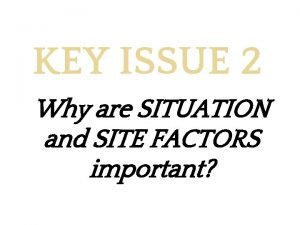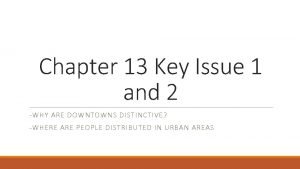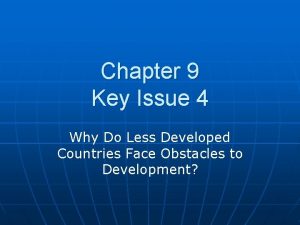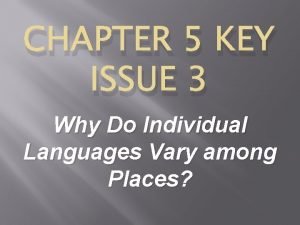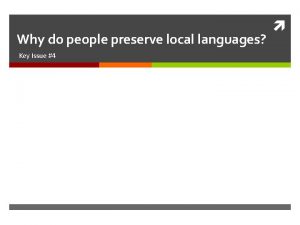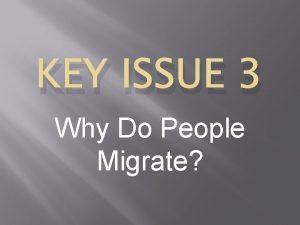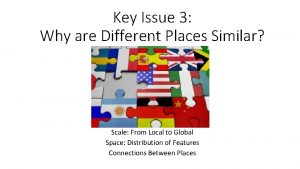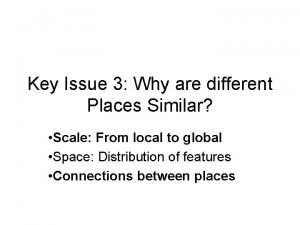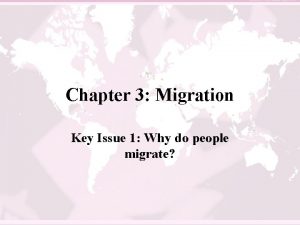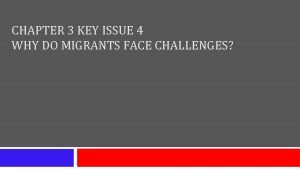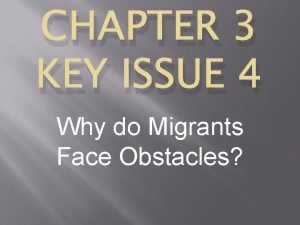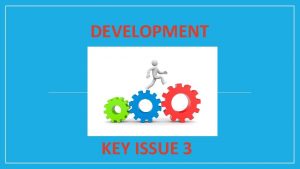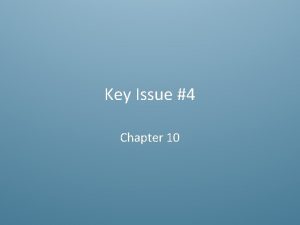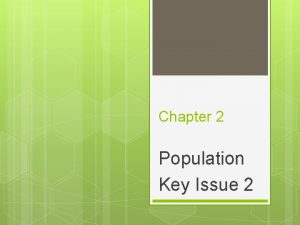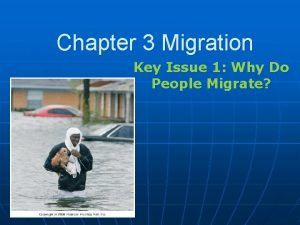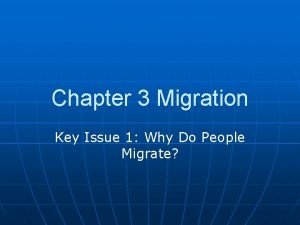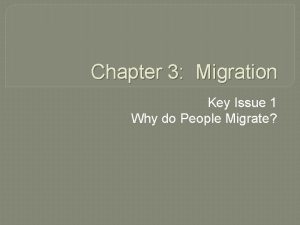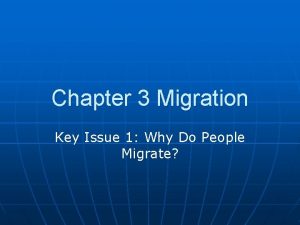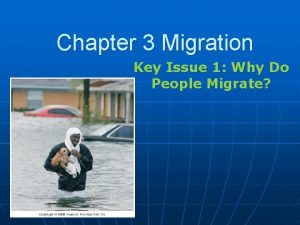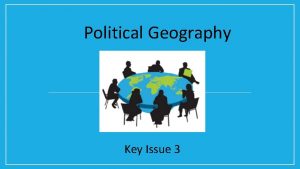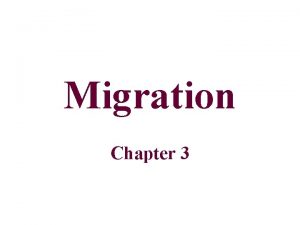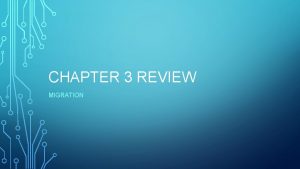Chapter 3 Migration Key Issue 1 Why do












- Slides: 12

Chapter 3: Migration Key Issue 1: Why do people migrate?

Why Do People Migrate • Geographers document from Where people migrate and to where they migrate. • Also study reasons why people migrate. • Most people migrate in search of three objectives: - Economic Opportunity - Cultural Freedom

Reasons for Migrating • • • Migration – type of relocation diffusion. Emigration – from a location. Immigration – to a location. Difference is net migration. Push & Pull Factors – people decide to move based on these factors. • Most people migrate for economic reasons.

Economic Push and Pull Factors • Push Factor – induces people to move out of their present location. • Pull Factor – induces people to move into a new location. • Relative attractiveness of a region can shift with economic change. Karrie wants you to do the “Push Factor!”

Cultural Push and Pull Factors • Forced International Migration – slavery and political instability. • 20 th century – political instability resulting from cultural diversity. • refugees – people who have been forced to migrate from their home country and cannot return for fear of persecution.

Refugees: Sources and Destinations Title: Major sources and destinations of refugees. Caption: A refugee is a person who is forced to migrate from a country, usually because of political reasons. The U. S. Committee for Refugees estimated that in 2001 there were 15 million refugees forced to migrate to other countries and 20 million forced to migrate to another region of the same country. Keywords: migration, refugees

Environmental Push & Pull Factors • Physically attractive regions. • Mountains, seasides, warm climates. • Pushed from homes by adverse physical conditions. • water – poses the most common environmental threat.

Intervening Obstacles • In the past, primarily environmental. • Today’s migrant – local diversity in government and politics.

Migration • Ravenstein’s theories – most migrants relocate a short distance and remain within the same country. • Long-distance migrants to other countries head for major center of economic activity. • International Migration – permanent movement from one country to another. • Internal Migration – permanent movement within the same country.

Migration • Interregional migration – movement from one region of a country to another. • Intraregional migration – movement within one region.

International Migration • Further divided into two types: forced and voluntary. • Zelinsky identified a migration transition, consists of changes in a society comparable to those in the demographic transition. – Stage 1: Unlikely to migrate permanently; has high daily or seasonal mobility in search of food (high birth and death rates and low NIR). – Stage 2: International and interregional migration from one country’s rural areas to its cities (NIR rises rapidly as a result of sharp decline in the CDR). – Stage 3 and 4: Destination of the international migrants leaving the Stage 2 countries in search of economic opportunities (CBR declines). – Internal migration within countries in Stages 3 -4 of the DTM is intraregional, from cities to surrounding suburbs.

Characteristics of Migrants • Most long distance migrants are male. • Adult individuals rather than families with children. • Women now constitute about 55% of US immigration. • Ravenstein believed most long-distance migrants were young adults seeking work. • Mexico: – In the late 1980 s males were about 85% of Mexican migrants to the US without proper documentation – Since 1990 s women have accounted for about 50% of the undocumented immigrants coming from Mexico
 Pictures
Pictures Key issue 2 why are situation and site factors important
Key issue 2 why are situation and site factors important Why do services cluster downtown
Why do services cluster downtown Chapter 13 key issue 1
Chapter 13 key issue 1 Chapter 9 key issue 4
Chapter 9 key issue 4 Key issue 3: why do individual languages vary among places?
Key issue 3: why do individual languages vary among places? Key issue 4: why do people preserve local languages?
Key issue 4: why do people preserve local languages? Dubai 1985
Dubai 1985 Why are different places similar
Why are different places similar Key issue 3 why are different places similar
Key issue 3 why are different places similar Chapter 3 key issue 1
Chapter 3 key issue 1 Key issue 4 why do migrants face obstacles
Key issue 4 why do migrants face obstacles Key issue 4 why do migrants face obstacles
Key issue 4 why do migrants face obstacles

